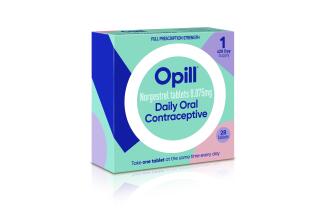Release of New Pain Reliever Spurs Analgesics Marketing War : Pharmaceuticals: Syntex Corp.’s Aleve could hasten a shakeout in the crowded $2.4-billion industry.
- Share via
The first new non-prescription pain-relief remedy in a decade has landed on retailers’ shelves, igniting a marketing war in the fiercely competitive $2.4-billion analgesics business.
Aleve’s arrival--with an expected $100-million marketing budget for the next year--could hasten a shakeout in the glutted pain reliever field, analysts said, as weak-selling products are dropped from retailers’ shelves.
“This is like D-Day,” said Paul Freiman, chief executive of Syntex Corp., the Palo Alto-based manufacturer of Aleve. “The allies are landing with Aleve, and the Panzer divisions are on their way to the beach to take shots at us. It’s going to be a battle.”
Rival manufacturers, which have been anticipating Aleve’s arrival for months, have tried to blunt its launch by stepping up TV advertising, in-store promotions, discount coupons and free samples.
One competitor has wasted no time preparing a rival product. Johnson & Johnson, maker of segment leader Tylenol, said it has received federal approval to begin marketing a longer-lasting version of that pain reliever. The company said Tylenol Extended Relief, which at eight hours lasts longer than current Tylenol products, will go on sale by mid-July.
Aleve is effective for eight to 12 hours.
Analysts expect Johnson & Johnson to bolster the new Tylenol product with a major promotional effort.
Procter & Gamble Co., which is marketing Aleve with Syntex, says Johnson & Johnson’s promotions for Tylenol Extended Relief could actually help Aleve.
“Tylenol is a very influential product in this market category, and they will be telling consumers that what counts is long-lasting pain relief,” said Tom Moore, president of health care products for Procter & Gamble. Aleve provides the longer-lasting relief, he said.
Aleve’s ad campaign, created by New York-based D’Arcy Masius Benton & Bowles, will promote the pain reliever as more economical for consumers because it provides relief for roughly twice as long as other comparably priced analgesics.
Proctor & Gamble will also promote the product’s child-resistant cap, dubbed Safety Squease, which it says is easier for arthritis sufferers to open than current child-resistant designs.
Moore said Aleve is “an important new launch” for Procter & Gamble, which has not introduced a major new brand since the Always feminine pad eight years ago. So far, he said, response from retailers to Aleve is “extremely strong.”
Analysts project Aleve sales at up to $225 million, which would give it about 10% of the U.S. market and make it the No. 3 brand behind Tylenol and Advil, which is manufactured by American Home Products Corp.
While Procter & Gamble is renowned for its global marketing prowess--its mainstay brands include Crest, Pampers and Tide--Aleve would be its only analgesic product. The Cincinnati-based firm’s earlier attempt to market a coated aspirin called Encaprin flopped due to stiff competition from ibuprofen-based products. This time, Procter & Gamble has a significant new product but faces very powerful marketers in Johnson & Johnson and American Home Products.
Aleve is likely to hurt the market share of all pain-relief products, but Tylenol and Advil may have the most to lose, said Marc Sterger, national merchandising manager for McKesson Corp., a drug distributor based in San Francisco. Tylenol, in particular, comes in so many different sizes and strengths that retailers may make room for Aleve by cutting back on that product’s display space, he said.
Judie Decker, a spokeswoman for American Stores Co. in Salt Lake City, owner of the Lucky Stores supermarket and Sav-On drugstore chains, said the biggest squeeze will come in grocery stores, where shelf space is at a premium. At Lucky Stores, she said, “we’ll have to look at the whole category and see if there are me-too products, like two ibuprofens.” The main ibuprofen products are Advil, Nuprin and Motrin.
Aleve is an over-the-counter version of naproxen sodium, a fast-acting form of the prescription pain reliever Naprosyn. It is the first non-prescription drug containing a new analgesic compound to be approved by federal regulators since the introduction of ibuprofen in 1984.
Dr. Matthew Conolly of the UCLA Pain Medicine Center said naproxen sodium has proven effective as an anti-inflammatory medication during years of use as a prescription drug. But he advised consumers to use it with caution.
“Even though these things have been made for over-the-counter use, it doesn’t mean people can consume them ad lib,” Conolly said. “These are serious drugs with serious side effects, as well as serious benefits. People need to read the package insert carefully.”
Aleve will be the first non-prescription pain reliever to include a warning on the package insert about alcohol consumption and use of the product. Johnson & Johnson said Tylenol Extended Relief will carry a similar warning.
BATTLE FOR THE ANALGESIC MARKET Syntex Corp. and Procter & Gamble Co. will fight to gain sales for the new Aleve over-the-counter pain reliever in a $2.4-billion market where Johnson & Johnson has a big lead. Market share based on sales of adult analgesics for the year ended May 8:
* TOP BRANDS Brand (manufacturer) Tylenol (Johnson & Johnson): 29.4% Private Label: 19.5% Advil (American Home Products): 13.8% Excedrin (Bristol-Myers Squibb): 6.9% Bayer (Eastman Kodak): 5.0% Other (Motrin, Anacin, Bufferin etc.): 25.4% * BY ANALGESIC CATEGORY: Analgesic (percent change in market share from a year ago) Acetaminophen (-1%): 46.1% Ibuprofen (5%): 24.9% Aspirin compunds, buffered asprin (-4%): 16.7% Aspirin (-3%): 11.5% *
Source: Information Resources Inc.; Towne-Oller & Assocs.
Note: Figures may not add up to 100% due to rounding.
More to Read
Inside the business of entertainment
The Wide Shot brings you news, analysis and insights on everything from streaming wars to production — and what it all means for the future.
You may occasionally receive promotional content from the Los Angeles Times.








